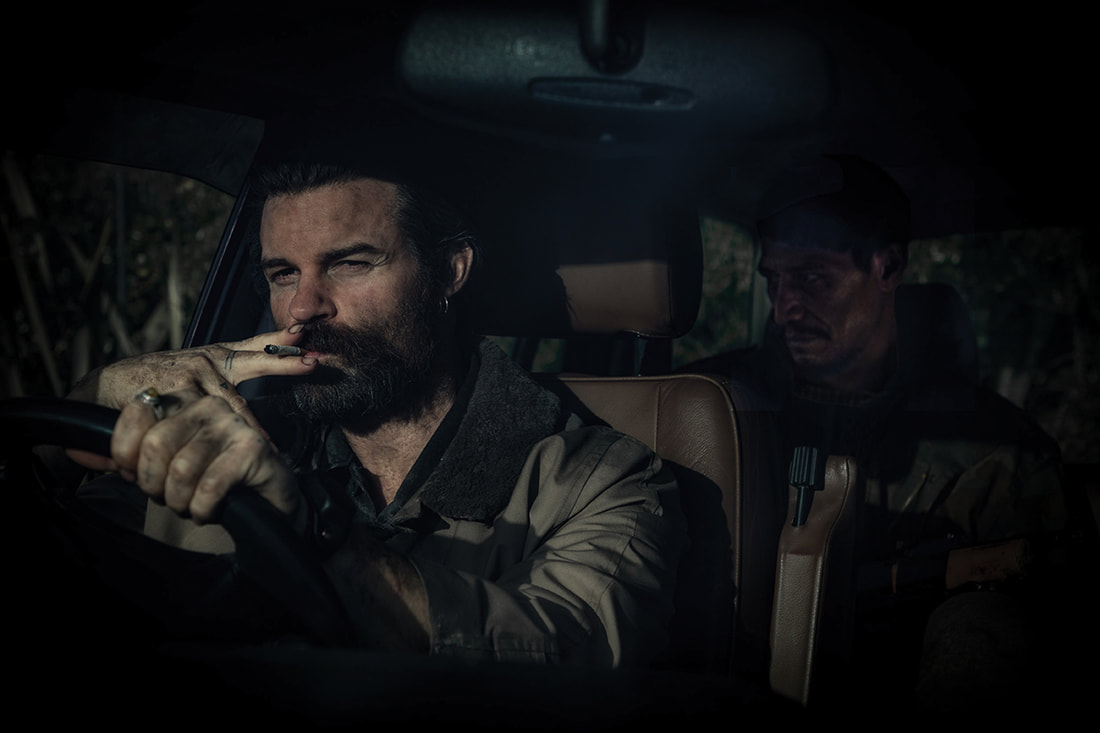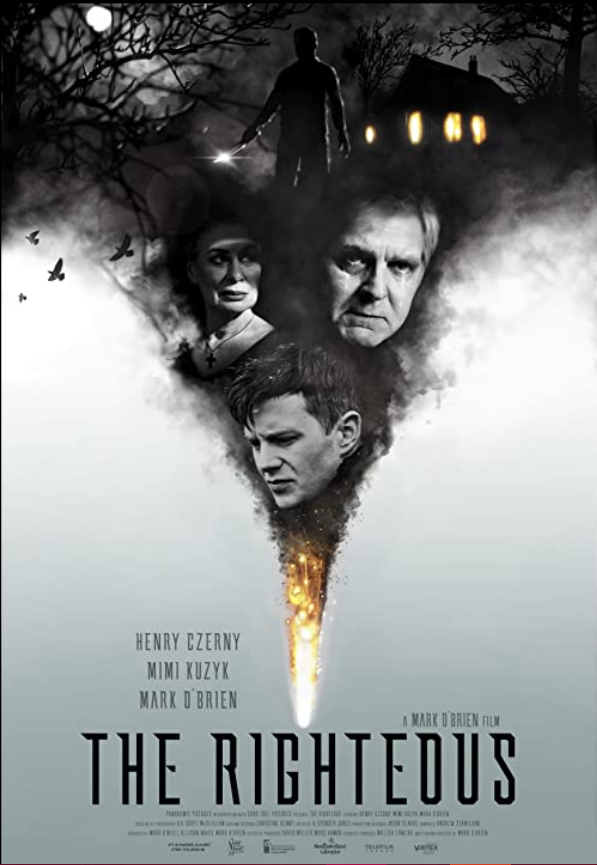|
We’ve all had at least one bad family road trip. Maybe it was the time your toddler threw up all over your new car, or maybe it was the time you had to sit squished between your least favorite cousins for several hours with no AC. But those experiences seem like dream vacations compared to the nightmarish family road trip that unfolds in Coming Home in the Dark. In this tense thriller directed by James Ashcroft, schoolteacher “Hoaggie” (Erik Thomson) and his wife Jill (Miriama McDowell) undergo chilling physical and psychological trials during a hiking trip with their two sons (Billy Paratene and Frankie Paratene). The movie is based on a short story by Owen Marshall and skillfully adapted for the screen by James Ashcroft and Eli Kent. After an impressive festival run, Coming Home in the Dark will be available on VOD and in select theaters starting October 1, 2021. The movie opens with an eerie landscape shot backed by a tense chord that builds to an uncomfortable volume. Then, a blackout and silence. Shortly thereafter, we meet a family of four on a seemingly normal road trip. The teenage boys bicker about music in the backseat, and the parents exchange exasperated glances as they try to make fun memories without driving each other crazy. Their conversations are split up by frequent cuts, making the dialogue sound like genuine conversation rather than lines written to introduce characters to an audience. Ashcroft tells us a lot about the family’s dynamics in these brief snippets - and he does so without using overly expository dialogue. While it’s totally normal for family vacations to be fraught with tension, there’s something different about this family’s bickering. With no music to fill the space between the family’s fragmented conversations, the opening sequence is anxious and uncomfortable. Cinematographer Matt Henley uses wide landscape shots to emphasize that this family is totally and utterly alone. They’re entering a space where danger awaits, and no one can help them. When the family stops for a picnic, they’re suddenly interrupted by a vagabond named Mandrake (Daniel Gillies) who robs them at gunpoint with help from his silent sidekick, Tubs (Matthias Luafutu). At first, it seems like the dreadful duo will walk away once they’ve secured the family’s valuables. But for his own twisted reasons, Mandrake decides to torture the family further by taking them for a hellish ride. Along the way, Hoaggie is forced to confront a shameful secret from his past. What started out as a story about an inexplicably sadistic villain ruining a family picnic turns into a stomach-churning thriller that’s partly about revenge and partly about deconstructing middle-class values and masculinity. Hoaggie’s personal turmoil introduces some ethical questions and themes into the story, giving us something to think about besides the pure fear and terror unfolding on screen. His inner conflict adds new meaning to a story that would otherwise be pure (though well-crafted) psychological torture porn. Ashcroft doesn’t shy away from showing violence on screen, staging one of the most upsetting moments of the film around the 16-minute mark. This shocking visual, which proves to be one of the most climactic parts of the movie, is followed by some questionable slow-motion shots that are thankfully saved by McDowell’s genuine performance. After this emotional high, the slow-burning plot never quite reaches that same level of intensity again. Luckily, the talented cast makes the unconventional plot map work. Hoaggie, Jill and Mandrake make for an interesting dramatic trio, and the three actors portraying them give equally strong performances. Miriama McDowell effectively captures the rage, fear, and power of a mother trying to protect her family. Her piercing screams and contorted facial expressions sharpen some of the most shocking moments of the story, making it impossible to be unaffected by the film’s violence. Her severe emotional trial makes her husband look unsympathetic in comparison - which seems to be what Ashcroft intended. Although Hoaerfect family life that Hoaggie and Jill have created. Daniel Gillies demonstrates an exceptional grasp of timing and tone, giving Mandrake a vile and darkly comedic charm you won’t soon forget. With a good mother, a foolish father and a sadistic nomad driving the story, Coming Home in the Dark turns out to be pretty nihilistic. The only character who remains emotionally unaffected by the others is Mandrake’s partner, Tubs, who maintains a cool and reserved disdain for life throughout the course of the story. Coming Home in the Dark establishes a hopeless world in which the only way to survive is to suppress all emotion and remain callously disinterested in everyone and everything. You have to wonder why anyone would make such a depressing movie. What’s the purpose of a film like Coming Home in the Dark, which delights in deconstructing hope and normalcy? It seems that these kinds of movies are created to make people uncomfortable - a necessary step for inspiring change and getting people to understand each other. Not all revenge stories can be satisfying and cathartic, because that’s not the way life works. The truth is often deeply upsetting. When we’re confronted by a life-altering circumstance (like getting robbed at gunpoint on a family vacation), it’s difficult to figure out how to move forward. Sometimes, you just have to sit in discomfort for a while - and Coming Home in the Dark makes you do just that.
0 Comments
Leave a Reply. |
"Our embodied spectator, possibly perverse in her fantasies and diverse in her experience, possesses agency...finally, she must now be held accountable for it." Categories
All
|


